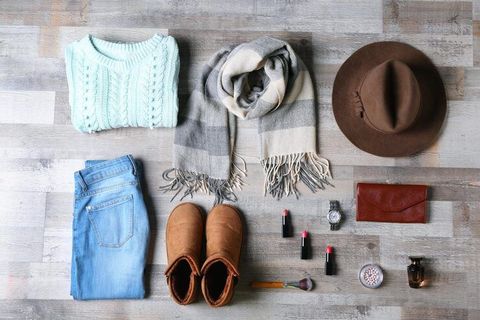As the fashion ecosystem expands across global e-commerce, social media, and digital-first platforms, fashion marketing helps bridge the gap between design and audience expectations. It also supports fashion houses, designers, and brands in shaping brand identity, understanding cultural influences, and adapting to seasonal trends. The field spans areas such as visual branding, advertising, influencer outreach, fashion analytics, audience research, sustainability communication, and digital experience design.
Importance
Fashion marketing matters today because consumers engage with fashion ideas constantly through digital platforms, visual culture, and social influence. The modern audience has more choices, more information, and higher expectations, making strategic communication essential. Effective fashion marketing supports the following needs:
-
Helps brands stand out in a competitive environment with consistent visual identity and messaging.
-
Connects audiences with relevant products by analyzing preferences, search behavior, style trends, and seasonal cycles.
-
Supports emerging designers in building visibility and understanding market expectations.
-
Strengthens sustainability awareness by communicating transparent practices aligned with responsible consumption.
-
Resolves confusion and information overload by presenting clear insights on trends, materials, and brand stories.
Fashion marketing affects designers, producers, retailers, digital creators, fashion media, and consumers. It offers tools that support research-driven decision-making, such as audience segmentation, style analysis, and data insights related to search trends and digital engagement.
Recent Updates
The past year has seen notable changes that influence fashion marketing strategies and audience engagement:
Rise of AI-powered creative tools (2024–2025)
During 2024 and 2025, AI-based image generation, automated product tagging, and trend forecasting platforms grew rapidly. These tools help marketers analyze visual patterns, optimize digital campaigns, and create high-quality visuals.
Increased focus on sustainability storytelling
Since early 2024, many international reports highlighted a rise in consumer interest in sustainable fabrics, lifecycle transparency, and circular fashion. This trend has pushed brands to communicate traceability, recycling programs, and material innovation with more clarity.
Social media algorithm changes (Mid-2024)
TikTok, Instagram, and YouTube introduced algorithm updates rewarding original content, community engagement, and longer-form storytelling. As a result, fashion marketers are adopting mixed-format content strategies that combine short videos, long educational posts, and creator collaborations.
Growth in virtual fashion and digital try-ons
Between January–August 2024, major tech platforms expanded virtual fitting tools, 3D product views, and AR-based experiences. These innovations improved online product discovery and helped marketers create immersive interactions.
Consumer preference shifts
Reports from late 2024 show rising interest in minimalism, comfort-driven style, slow fashion, and investment pieces. These shifts influence messaging, color stories, and seasonal campaign strategy.
Laws or Policies
Fashion marketing intersects with several regulations that influence advertising practices, consumer protection, sustainability claims, and digital communication. While rules differ by region, some common policy areas include:
Advertising and disclosure regulations
Most countries require transparent labeling when content involves influencers, endorsements, or promotional collaborations. Disclosures such as “sponsored,” “paid partnership,” and “advertisement” ensure consumers receive clear information.
Consumer protection and authenticity
Regulations focus on preventing misleading claims about materials, quality, or origin. Brands must present factual communication about product features, sustainability, and production practices.
Sustainability-related guidelines
Many governments encourage responsible communication around environmental claims. Marketers must avoid exaggerated statements about eco-friendly practices and rely on verifiable information.
Data privacy acts
Fashion marketing relies on analytics and audience insights. Data privacy laws—such as GDPR in Europe and similar frameworks in other countries—require transparency in how audience data is collected and used for personalization or research.
Digital accessibility requirements
Websites, campaign visuals, and marketing materials must meet accessibility guidelines to ensure inclusivity across audiences.
Tools and Resources
A wide range of tools support research, audience understanding, creative development, trend analysis, and content improvement. These tools help marketers create structured, data-driven strategies.
Trend Research & Analytics
-
Google Trends – Identifies fashion search patterns, seasonal demand, and audience behavior.
-
Trend forecasting websites – Platforms offering insights on color trends, cultural shifts, and style movements.
-
Analytics dashboards – Used to study performance patterns, top-performing formats, and audience engagement.
AI-Powered Creative Tools
-
AI design assistants – Generate mood boards, visual concepts, and campaign ideas.
-
AI content creation tools – Assist with copywriting, captions, visual enhancements, and layout suggestions.
Visual & Branding Tools
-
Graphic design platforms – Useful for mood-boards, lookbooks, and visual identity planning.
-
Photography editing tools – Help refine campaign visuals and product shoots.
Market and Audience Research Tools
-
Keyword research platforms – Assist in understanding high CPC keywords, search intent, and audience interests.
-
Survey platforms – Collect insights directly from fashion audiences for trend or style analysis.
-
Competitor analysis tools – Review industry benchmarks, digital presence, and engagement patterns.
Templates and Planning Resources
-
Marketing calendar templates – Organize seasonal planning and content themes.
-
Brand strategy worksheets – Help define target audience, tone, and visual direction.
-
Content planning sheets – Organize narratives, hashtags, keywords, and campaign timelines.
Example Table: Key Concepts in Fashion Marketing
| Concept | Meaning | Use Case |
|---|---|---|
| Audience Segmentation | Categorizing consumers by preferences, lifestyle, or demographics | Helps create relevant style messaging |
| Trend Forecasting | Studying future color, material, and style movements | Supports seasonal campaign planning |
| Brand Positioning | Defining a brand’s identity and values | Helps build consistent communication |
| Visual Storytelling | Communicating through images, themes, and mood boards | Enhances digital engagement |
| Digital Analytics | Tracking website and social interactions | Improves marketing decisions |
FAQs
What is the main purpose of fashion marketing?
The purpose is to help fashion brands communicate their identity, understand audience expectations, and deliver relevant messaging across digital and physical platforms. It ensures designs reach the right audience with clarity and consistency.
How is fashion marketing different from general marketing?
Fashion marketing focuses heavily on visual communication, seasonal cycles, cultural influences, and trend alignment. It often requires combining creativity with data analysis to match evolving style preferences.
What skills are useful in fashion marketing?
Research, trend analysis, content planning, visual design, market understanding, storytelling, and awareness of digital platform behavior are valuable for creating effective fashion-focused communication.
How do digital platforms influence fashion marketing today?
Social media, visual-first platforms, analytics tools, and AI technologies shape how audiences discover trends and interact with brands. These platforms guide campaign strategies and content formats.
Why is sustainability communication important in fashion marketing?
Consumers increasingly want transparency about materials, production methods, and environmental impact. Clear and factual sustainability communication builds trust and supports informed decisions.
Conclusion
Fashion marketing is an evolving field that blends creativity, research, cultural awareness, and digital strategy. It exists to help designers and brands communicate effectively, understand their audience, and navigate the fast-changing landscape of global style trends.
Recent advances such as AI-powered tools, new social media formats, and virtual fashion innovations continue to reshape how audiences engage with fashion ideas. At the same time, regulations encourage clarity, transparency, and responsible communication.
With thoughtful planning, accurate information, and consistent messaging, fashion marketing supports meaningful connections between fashion creators and diverse audiences, ensuring that storytelling, visual identity, and style insights remain central to the fashion experience.





